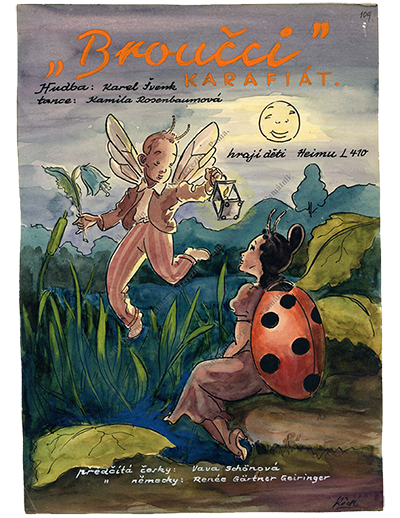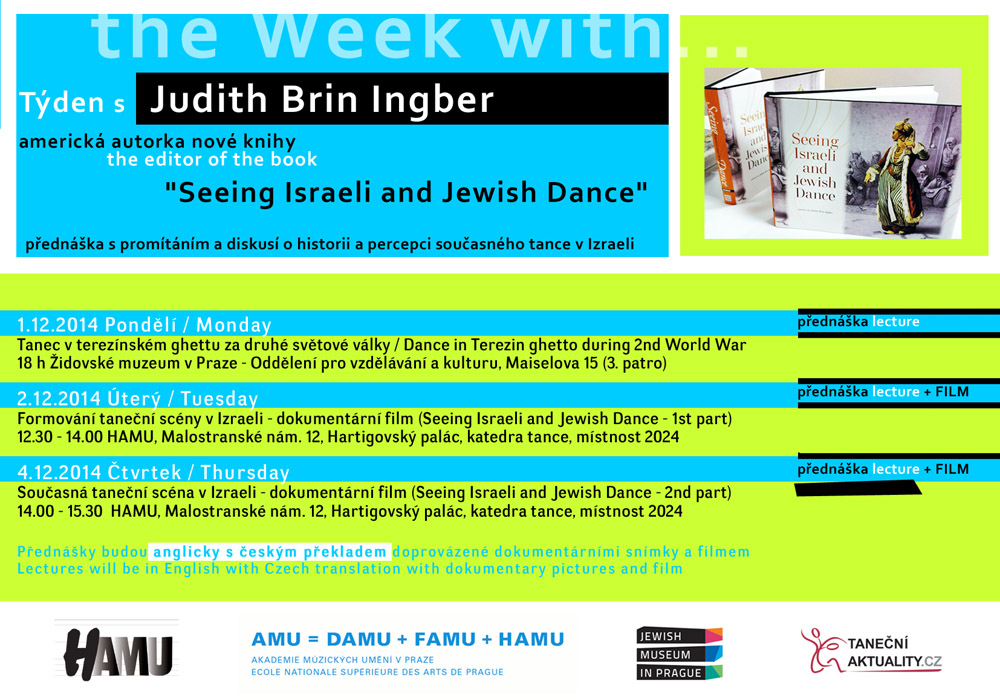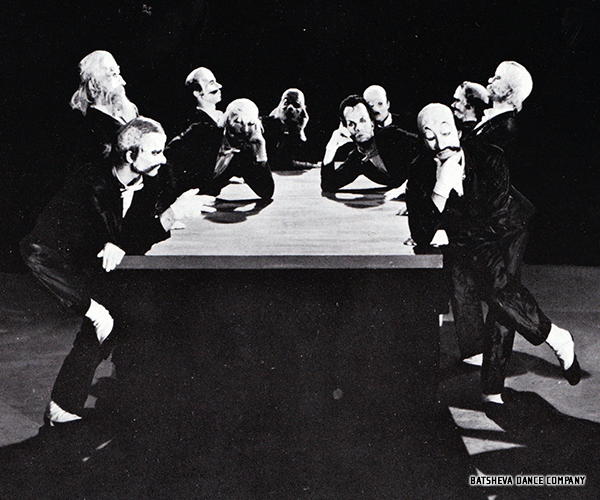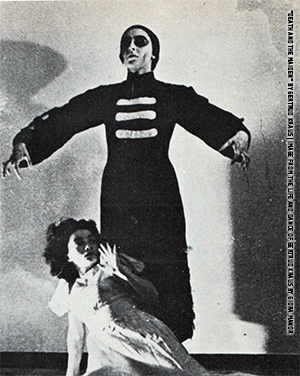Recent Ruminations
January 2021
Dear Friends, especially in Paris, New York, Tel Aviv, Minneapolis, St. Paul, Jaffa, Prague, and London,
I'm writing with a long saga to weave together how each of you fits into my own story about "Broucci", the musical produced first 80 years ago in the ghetto/camp of Theresienstadt, Czechoslovakia. At the end of this letter you’ll see my latest news about "Broucci".
In November of 2014, when I returned to Minneapolis after I had been teaching in Prague, the Czech Republic, I made a decision that continues to have wonderful repercussions: I decided to try my hand at re-creating "Broucci", one of the musicals from Theresienstadt that had so touched my heart and absolutely enchanted me. I knew I yet had to embark on much needed research.

Broucci Poster with Permission of the Theresienstadt Archives
The first time I had visited Theresienstadt was in the summer of 1971 on my honeymoon, granted a very unusual stop for such a trip. We had one contact: Dr. Karl Lagus who lived in Prague. Each morning we visited him and he outlined what we should see every day, highlighting famous old Jewish sites of what had once been a thriving Jewish community, including the one of the oldest synagogues in Europe, from medieval times, under the legendary kabbalist Rabbi Judah Loew who had created the Golem to help the beleaguered Jewish community; we saw Kafka’s house and the beautiful walking bridge over the Vltava or Moldau River, separating what had been the Jewish quarter near the old town square from the king’s castle. Dr. Lagus also introduced us to his young daughter, Dr. Helena Illnerova who hosted us for a performance of one of Prague’s famous puppet shows. Overall,my impression was the buildings in the famous city were grey and grimy, a metaphor for the city at that time under Communist rule.
The highlight of the trip was having Dr. Lagus personally show us the ghetto camp. By 1971, Karl Lagus was its director. He had been a prisoner there thirty years before and a fellow survivor living in Minneapolis, Eddie Grosmann, had connected us. There was still rubble as Dr. Lagus took us around the neglected buildings, some set about a square. He explained his office ironically had been that of the Nazi commandant. Some generations earlier, Theresienstadt had once been a garrison town for billeted soldiers sent there to defend the Austro-Hungarian Empire. All the buildings was surrounded by double thick old stone walls, set widely apart, filled in with impenetrable earth, but topped with an area of grass. Standing atop the place, one could see far off into the farmlands and imagine down the train tracks ending in Theresienstadt, that if traveling in the opposite direction, one could have returned to Prague. But those imprisoned there since 1941 had come on a one-way trip.
The buildings still looked like floor after floor of barracks; during World War II. The Nazis changed it all into a ghetto/camp, at first for the Jewish families of Prague, and then from Bohemia and ever widening areas from across Europe. The buildings were crammed; some were dormitories for boys, other for girls, or the adults, men separated from women. One could still see tiers of wooden slabs instead of beds, where multiple prisoners “slept” before their assigned work details. No tourists were encouraged to see the site--the Communist government was only caretaking the forlorn site. Dr. Lagus took us through what seemed to be a ghost town of horrors, including the crematorium hidden off in the back. He told us where he hoped to build a museum to the artists who had died there or had been transported to Auschwitz down the traintracks. He also told us of his dream to create a ghetto camp archives.
My second visit to Prague took place in 2014. I had traveled to the city and its Academy of Dance and Music, at the invitation of Tereza Indrakova, a dancer I had met in Tel Aviv studying for her doctorate at the Academy. I lectured at the Academy and also at the Jewish Museum where I talked about some of the dance performances and artists of Theresienstadt, including Kamila Rosenbaumova, the choreographer of the children’s musicals “Broucci” and “Brundibar”.

I was also able to locate Dr. Illnerova through my friend Blanka Brichta. (We had met when Blanka walked into my dance history class at the University of Minnesota after escaping Communist Czechoslovakia 30 years before). Dr. Illnerova arranged for me to visit Theresienstadt again. In the 45 years since I had been there, the buildings had been turned into a living museum with exhibitions and extensive signage, some explaining the Nazi system for imprisoning families and their different living quarters; where had the adults worked; and even where had some of the performances taken place, including a reconstruction of the attic theatre where “Broucci” was performed.
An extensive Archives had been built. Dr. Illnerova helped me to research placards and posters of all the cabarets and performances in which Kamila Rosenbaumova, dancer and choreographer, had appeared.
In addition, I went to Israel for further research. I had the extraordinary experience of meeting and interviewing Vera Meisels who as a child, was imprisoned in Theresienstadt. During that time, she performed in “Broucci” and remembered songs to sing to me, movements to show me and shared many reminiscences about the rehearsals and the production. Vera also worked as a docent at the Children’s Museum, Beit Terezin, at nearby Kibbutz Givat Haim. Through her introduction, I was able to spend almost a day at Beit Terezin.
Back in Minneapolis, I turned for help to my friend and dancer Blanka Brichta who'd grown up in Prague. Blanka suggested that I work with the children’s drama workshop at Sokol, the Czech Slovak Center in St. Paul. They welcomed the idea of creating a "Broucci" production, also incorporating children from the Sokol folk dance classes and the Sokol adult choir. Blanka set in motion meeting many families and staff at Sokol and together we began the whole incredible nine- month process. Many helped with the production, especially the composer Craig Harris who found fragments of Schvenk’s original music and created a total piano score, which he performed for the performances. He also coordinated the singing of traditional Czech songs with the Sokol adult choir director. The choir performed at the two Sokol performances plus a special performance that was added for the Sholom Jewish home for the aged, not far from Sokol. I even met the bakers of Sokol who were interested in baking traditional Jewish Czech wedding cookies to offer to the audience after the performances (which end in a wedding). In addition to the performances we created an exhibition explaining much generally about Theresienstadt, such as how close it was to Prague, who were the artists sent there who had created “Broucci”, and who were Jewish families and individuals in Minnesota who had survived Theresienstadt and other camps.
What turned out to be an entrancing exhibition about Theresienstadt was set up in a Sokol room above the stage, enhanced by photographs, maps, recordings, information and illustrations. We also received aid from the Center for Holocaust and Genocide Studies at the University of Minnesota, directed by Professor Alejandro Baer. Audiences of all ages perused the exhibit before and after the performances.
My dear friend Marylee Hardenbergh heard about the project as it was unfolding, and came to see the production at Sokol in the late spring of 2016.
Nancy Mason Hauser has been my videographer over many years and she agreed to video our dance rehearsals, age-appropriate talks to the children and their families about the Holocaust, and other preparations for the production plus the two performances at Sokol and people at the exhibition. In the end, she created two different videos about the process of making our version of "Broucci" and the performances. I was grateful the videos enhanced a residency I had at the Jewish Community Center of Milwaukee through their Holocaust Education funds. (Now, both videos are on my website).
Sometime after I returned from Prague, I was astounded to receive an email from Kate Rhys, who, I believe, got my address through Prague's Jewish Museum. She is the daughter of the choreographer Kamila Rosenbaumova, whose original idea it was to create “Broucci.” So started our invaluable email correspondence. The most important point was to correct the mistaken information I had that Rosenbaumova did not survive World War II. Kate shared so much precious information about her family, and pictures as well, all essential to my recent article, published in the Israeli magazine "Dance Today #36". Ruth Eshel is its editor-- it was with Ruth's encouragement that I agreed to finally sit down and write up all that had happened to me in my quest to learn more about Kamila Rosenbaumova. In the end, I tried to make real her accomplishments before, during and after World War II, with an emphasis on the incredible "Broucci" production. Seven years later I could correct a mistake published in my dance book Seeing Israeli and Jewish Dance. Kamila, in fact, had survived Auschwitz and after the war, made a new life, had a new family, and went back to teaching dance to actors and children in Prague.
For my new article, Blanka again helped me, especially with questions of Czech folk traditions and correct spelling (including correct accents) for the article called "'Correcting a Published Error: 'Kamila Rosenbaumova, the choreographer of Theresienstadt's Brundibar and Broucci died in Auschwitz', and Other Quandaries", published in Dance Today #36, 2018. In addition to the videos, the article too, is also available on my website. Read the article.
The other important contribution to these long introductions, so you all know who is who, is something further about Marylee: she told me that she has a friend, Liesi, whose mother Marianka Zadikow is also a Theresienstadt survivor, living in upstate New York with her second daughter, Lori. Marylee also sent me information about a documentary that's been produced and available on-line called "Defiant Requiem: Verdi at Terezin" which includes Liesi's mother. She was one of the singers in the Requiem (It's a very moving film about Verdi's Requiem performed in Theresienstadt 16 times, the director Rafael Schachter and how his singers, including Marianka, managed to memorize the oratorio from only one single score that had been smuggled into Theresienstadt).
This summer I was able to have a few long-distance-phone calls with Marianka about her memories of Theresienstadt. I also introduced her to the French Holocaust researcher Laure Guilbert who is continuing to interview Marianka. (An article by Guilbert about artists in the Holocaust is also included in the "Dance Today" issue #36 on my website if you are interested).
After reading through this long, annotated introduction about who is who, and how we all know each other, I hope you can now especially appreciate my most recent email from Liesi which appears below. Each of you have played an essential part in Marianka's priceless enjoyment of "Broucci".
Here is Liesi's letter:
“Dear Judith,
When my mother and sister Lori visited today I was finally able to share "Broucci" with them. I'm so happy about that! My mother's joy and involvement far exceeded my expectations. She listened intently to your introduction and narrative, vehemently agreeing with you and affirming your detailed descriptions. She sang along with the Czech national anthem as well as at least 2 other Czech songs- delighted that she remembered all the lyrics, all the stanzas - conducting other music with her hand, smiling broadly. She was able to actually see a tiny bit of the dance sequences. Lori described other dance sequences to her so she could visualize the choreography. She was involved and thoroughly enjoyed the experience. Lori and I did as well but we mostly enjoyed watching her watch and actively participate. She does seem to have some personal knowledge and perhaps actual acquaintance with Friedel Brandeis Dicker, Karel Schvenk and Vava Schonova. She described Schvenk's musical genre and said people had trouble correctly pronouncing Vava Schonova's name. I hope that whenever she speaks with you she elaborates on these individuals. They intend to call you within the next few days but I wanted to give you "my take " on everything and to thank you for helping make this such a joyful, unforgettable afternoon.
Warmest regards, Liesi”
To close, I want to share the latest of my ongoing news about "Broucci" and the article I wrote for the Israeli dance journal. A dance historian I know, named Suki John, wrote me recently to inquire whether my article could be included in a new book she's co-editing with Michael Polgar, to be called The Holocaust: Remembrance, Respect and Resilience, an on-line, free, Holocaust resource text. Suki (who's associate professor of dance at Texas Christian University) and Michael (a sociology professor at Penn State University), in addition to being co-editors, are first cousins. Their parents are siblings who survived terrible things in the Holocaust which helped motivate Suki and Michael to create the new book. Ruth Eshel, my editor of Dance Today has given permission to Suki and Michael to reprint my chapter. As well, I've gotten a clear, colorful reproduction of the actual “Broucci” poster that advertised the original production in Theresienstadt. I have permission from the Theresienstadt Archives allowing Suki and Michael to reprint the rare poster for "Broucci". It has Kamila Rosenbaumova's name as choreographer and the other collaborators of this incredible production also appear on it.
THAT concludes my long saga with thanks to each and every one of you,
Love and health to you all in this new year of 2021,
Judith
ABOUT THE AUTUMN SUKKOT HOLIDAY'S Dance called Simhat Beit Hashoevah or the ancient Most Joyous Jumping and Drawing of the Water Dance:
I wish you a happy Sukkot, a Hag Sameah, when we are required to rejoice and be happy, never mind the current state of affairs.
In studying ancient Jewish dance, as my gift to you in this new year, I want to share something I've learned about dance at Sukkot. It is commanded to be joyous and it is described in Tractate Sukkot that the High Priest danced the most joyous dance there ever has been. I'd like to share what I've learned about this dance on the first day of Sukkot, and also about the night before that most joyous dance that was ever danced. There was a prelude, including another extraordinary performance. (The following includes some of my own interpretation based on my studies with Rabbi Zev Harari).
For the Harvest Festival of Sukkot, the Israelites had walked and hiked up the mountains to the Temple on Mt. Moriah from all over the land. Each person was commanded to participate in the Three Pilgrimage Festivals (which each had dance components...). For Sukkot, those who reached the Temple, gathered together in the Women's Court below the 17 steps leading to the Holy of Holies (which held the fragments of the Ten Commandments carried for forty years in the desert. Now they were home in the Temple).
Everyone waited up all night, waiting for the others to arrive, standing all together in the women's court. That courtyard was huge and it was lit with bonfires so big, it was said that the court was as light as day. Suddenly attention was turned to watch the landing on the top of the staircase.
Why? What did everyone watch? It was many things, but one was a Dance Contest between the Highest Judges of the land, all those who were the wise of the Sanhedran. What was it the judges of the Israelite's Supreme Court were doing? They were juggling flaming torches and dancing, entertaining, while everyone waited for the rest of the nation to hike up the mountains from all over the land.
When dawn came there would be the climax, the dance of all dances to behold. We're told the Israelites watched the most joyous dance that ever was danced. To prepare them at sunrise, the High Priest led a huge parade of all who had gathered, going back down below the Temple, onward, outside the gates of Jerusalem.
Then, when the gathered were outside, the High Priest turned and everyone turned; they were looking back at the Temple aglow with the new morning sun, reflecting on the copper that decorated the outside of the Temple. The rays of the morning sun were magnified and everything seemed aflame, but it was God to be glorified, not the sun or the effects of that needed warmth.So the High Priest turned everyone to face a different direction. He turned their attention to his personal Halleluyah.
First he poured a libation onto the ground from water he carried in a copper vessel from the Temple. The water joined with the live stream of water running outside the city walls. Then, he began his jumping dance. He jumped over the water, he danced and cavorted and jumped more and more. It is written you have never seen a more joyous dance.
Alas, I have not been part of that Sukkot crowd. I can only imagine what was the most joyous dance ever danced.
I can't help wondering what were the High Priest's steps? Maybe each High Priest, whoever in that position, knew the original steps and improvised when it was his turn. To be a High Priest, was to be as charismatic a performer as anyone ever was.
I wonder about the accompaniment to his dance? Maybe there was glorious song since all the Israelites had sung in the night--I was told by Shalom Hermon years ago about the Psalms of Ascension (Shalom, the Israeli creator of such wonderful dances in Haifa that they became favorite folk dances). He told me everyone knew King David's psalms and the special 17 known as the Psalms of Ascension were sung antiphonally with the officiants as they went up each of the 17 steps towards the Holy of Holies, to the landing.
The Israelites surely had a special glorious song as the High Priest danced that most joyous dance ever danced. Maybe there was drumming, too, and like the Levites of the Temple, maybe harpists on David's lyre, maybe the Shofar was blown again?
I wonder how all could have seen that glorious dance? Was the High Priest up on a knoll? Maybe everyone in the crowd was moved to dance, to participate so they could truly experience the joy? Sometimes I have been blessed to experience an essentially amazing, creatively joyous time when dancing, and I recall what a deep blessing, what a mystical experience it was. And sometimes I, too, have been moved, truly touched when watching powerful movers-- experiencing honest, mystical uniting moments.
Just know that we are to stop our sadness from Yom Kippur, stop our mourning and our difficulties brought up while fasting. Now we leave behind our accounting of mistakes and sins and missteps of the old year. Now it is a new time, and we are commanded to be joyful.
May I suggest creating a most joyous dance in the coming days, in honor of that dawning moment of Sukkot, led by the High Priest?
A Message from Judith Brin Ingber
As I write to you, we have no performances to go to, no way to gather together in studios for rehearsals for new work or to continue our practice in class in the ways we knew before the COVID-19 virus. I feel like we are on some terrible tour, with an untoward landscape both familiar but foreign, no tour guide to explain anything, not even how long this tour lasts?
What must have been an equally terrifying time were the years leading up to WWII and during the war, but artists continued creating. The following is my ode to them.
"The Guernica" was an inspiration to Sara Levi-Tana who spoke to me about Picasso’s painting and gave me a canvass reproduction she had gotten in Spain. Picasso's anti-war painting shows his outrage against the Nazi bombardment and destruction of the Spanish town. Because of the world’s silence about Guernica, the Nazis learned there would be no outcry against their genocidal killings. See Picasso’s Guernica Sara-- founder, director and resident choreographer of Inbal Dance Theatre, Israel's first modern dance company—choreographed “Musia’s Legs” set in the Nazi camp Auschwitz.
I had the privilege of watching Kurt Jooss restage his anti-war piece The Green Table for the Batsheva Co., in the ‘70s showing the futility of indifferent diplomats around their green table, intersecting with images of war and The Angel of Death's horrific effects.

The choreographer/ teacher Gertrud Kraus was such an inspiration for me in Tel Aviv seen here in her duet "Death and the Maiden." She originally choreographed it in Vienna before her escape from the Nazis. The photo is from Giora Manor's book The Life and Dance of Gertrud Kraus.

I remember seeing the inspirational dancer Bonnie Mathis in Antony Tudor's Dark Elegies presented by Ballet Theatre. Tudor depicted an entire community in mourning, accompanied by Gustav Mahler's "Songs on the Death of Children”.
Close to my heart is all I learned about artists working and inspiring imprisoned children to rehearse and perform in Theresienstadt, the Nazi ghetto camp outside Prague. Broucci (Fireflies) was created by the choreographer Kamila Rosenbaumova with music by Karl Schvenk, costumes/set by Friedl Dicker-Brandeis and direction by Vava Shonova. Despite the children falling ill, or worse, or deported to Auschwitz, those remaining loved depicting the story of fireflies flying out over the flowers after winter. Broucci was performed over 35 performances.
Like the children in Broucci this bleakness where we find ourselves will be followed by a new spring. Perhaps my beloved dance world, its dancers, choreographers and teachers including me, will learn to work entirely differently but creativity will abound.
I invite you to explore more information on my site about Broucci (Fireflies) from the recent Dance Today #36; about Batsheva (see my comments about their newest work in Dance Today #37) or about Sara Levi-Tanai (in the book by Henia Rottenberg and Dena Roginsky).
Best,
Judith
